WHY USE PHOTOGRAMMETRY?
There’s many different methods for 3d scanning out there, going by many different names – laser, LIDAR, cyber-scanning, white light, structured light, and photogrammetry. How does photogrammetry work, and why do we think it’s the best?
HOW IT WORKS
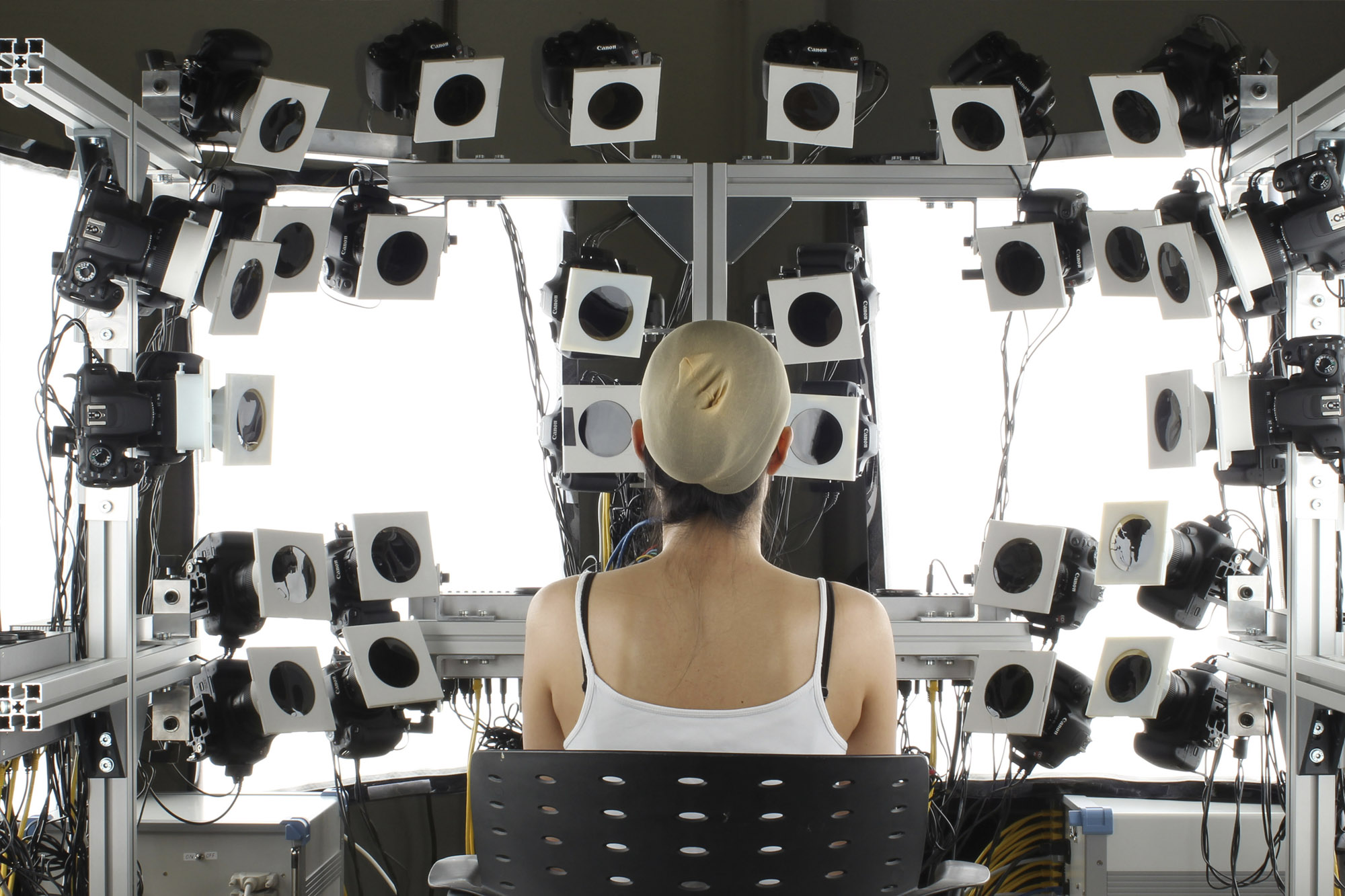
To put it simply, photogrammetry scanning works by taking hundreds of photographs of a subject from many different angles. These photos are then fed into a computer, which compares the photos and builds a 3d model.
SPEED

Compared to other methods of scanning, photogrammetry has the fastest capture time. On a busy film set, slower scanning techniques waste time and produce far less useful data. Since the cameras in our rig are synchronized, we can capture a scan in 1/1000th of a second.. This makes it possible to rapidly scan multiple takes, capture fleeting facial expressions and poses in motion. For example, we recently captured over 70 blendshapes and full-body scans on a 45 minute shoot.
PRODUCTION FRIENDLY
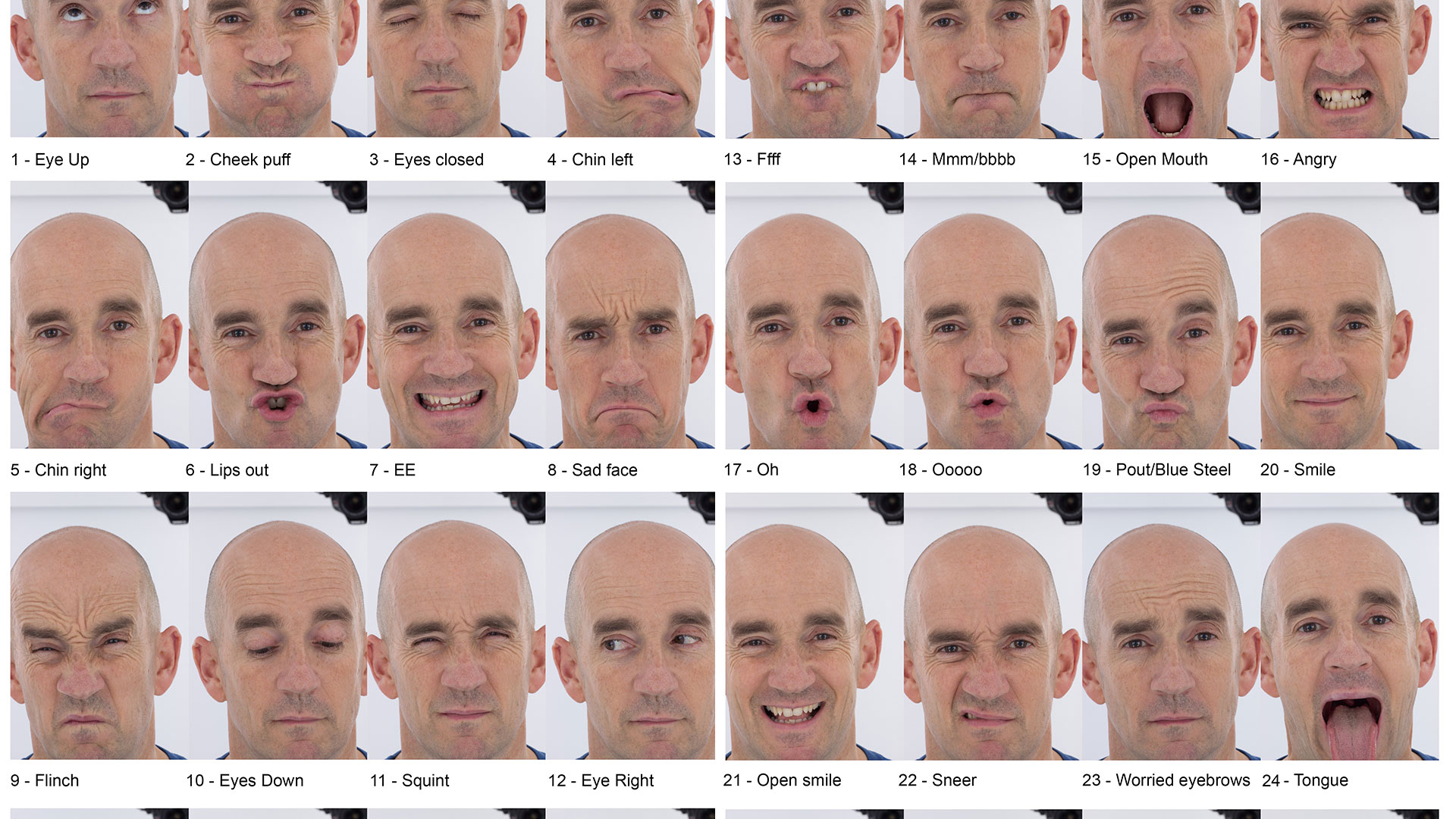
On set, we capture as many scans as you need, and only bill you for the scans you select from a contact sheet. This allows you to scan actors, costumes, and expressions that may or may not make it into the final shot – letting you capture as much ‘backup’ data as you want, and then order it only when you know it’s needed.
MOBILITY
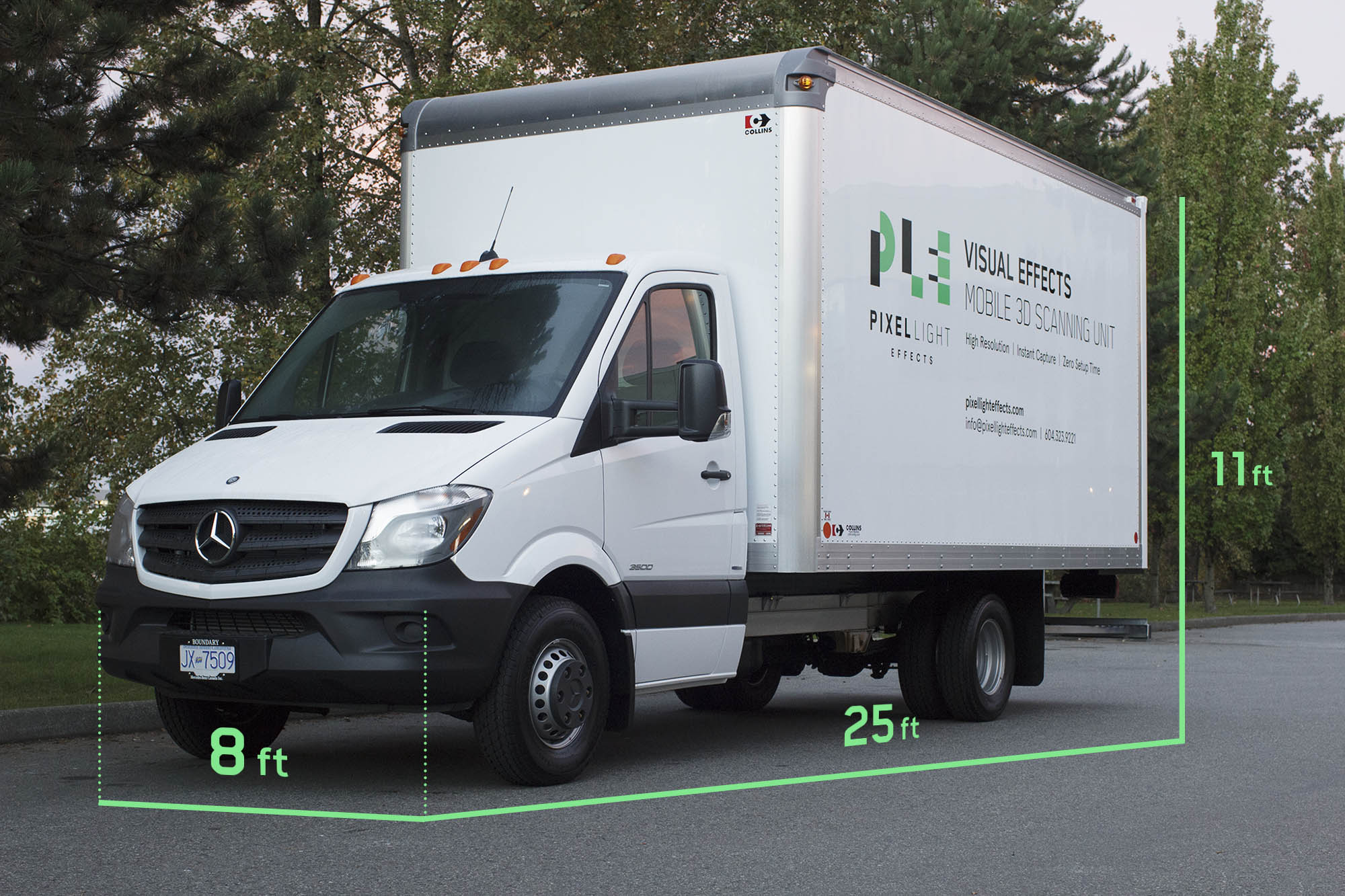
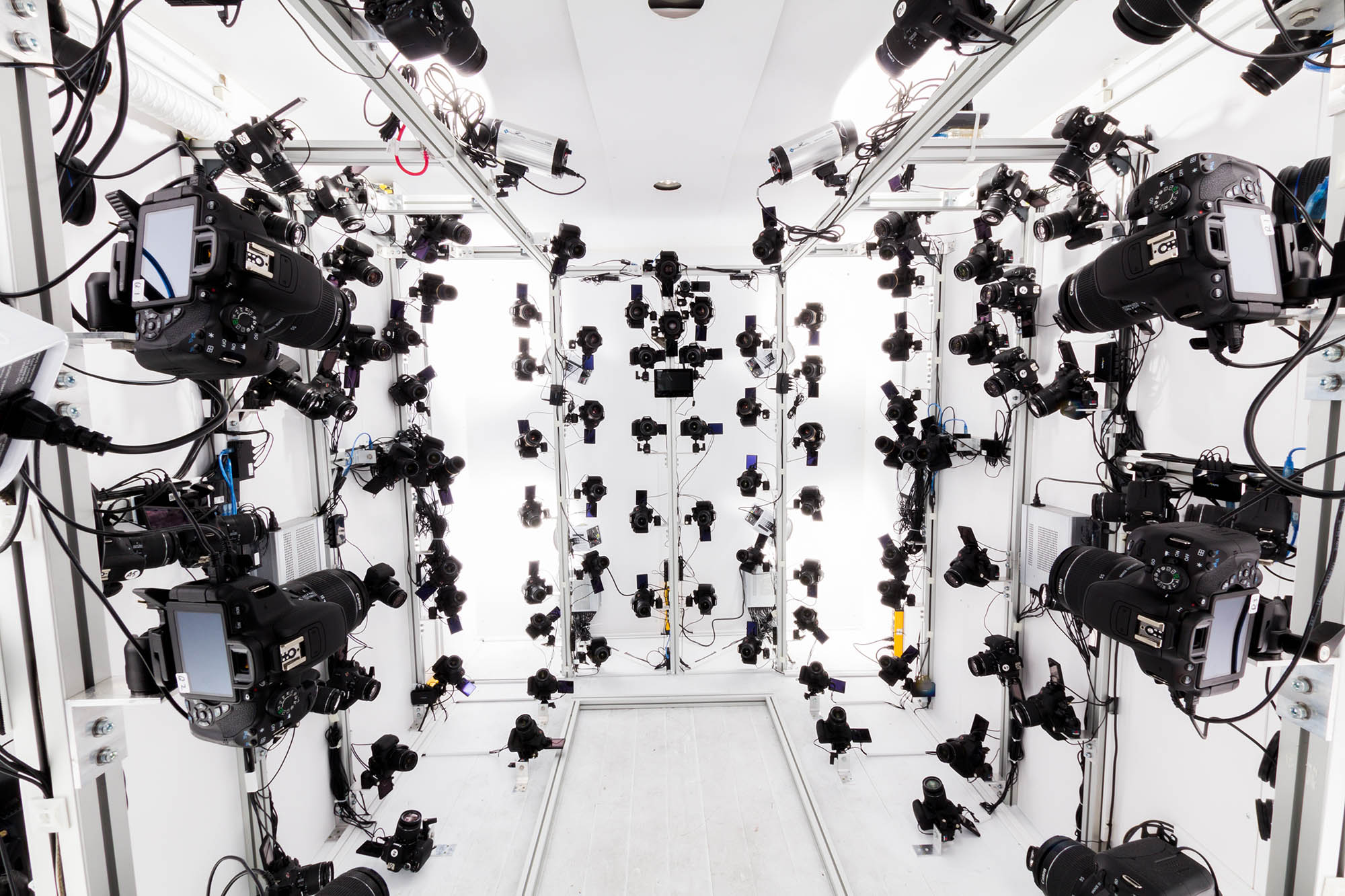
We’ve also solved the tricky problem of mobility – after growing frustrated with the challenge of disassembling, reassembling, and aiming hundreds of cameras every single time, we’ve custom-built a mobile scanning unit – a modified Sprinter with a scanning system permanently installed inside of it. With this, we can drive our whole setup to set, park, power up, and be ready to scan with total reliability.
QUALITY

The quality of photogrammetry scanning is also much higher compared to other options. We’re committed to providing assets that are actually useful – at the end of the day, low quality scans are going to require more manual cleanup, decreasing the realism of the final digital double and raising the cost of artist labor.
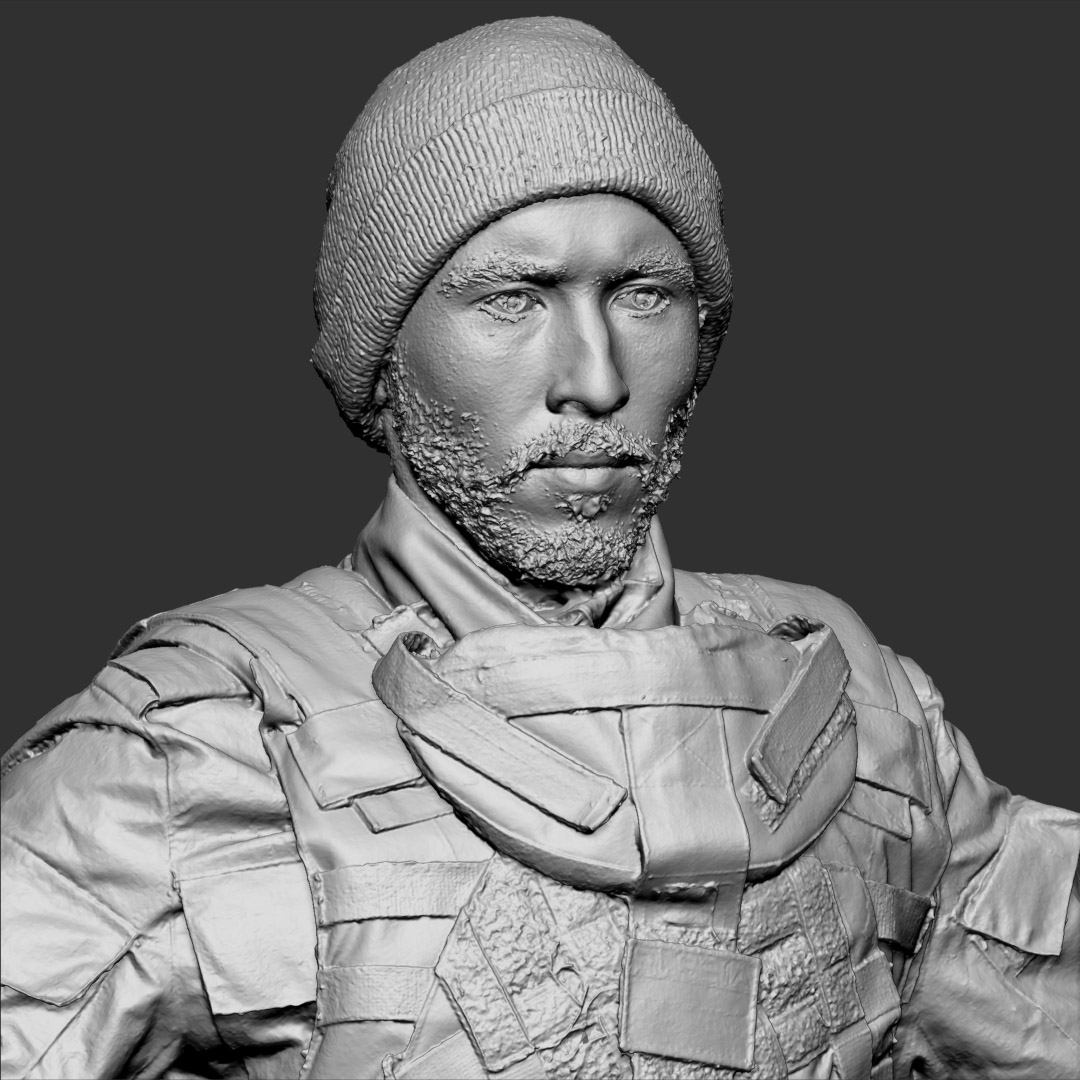
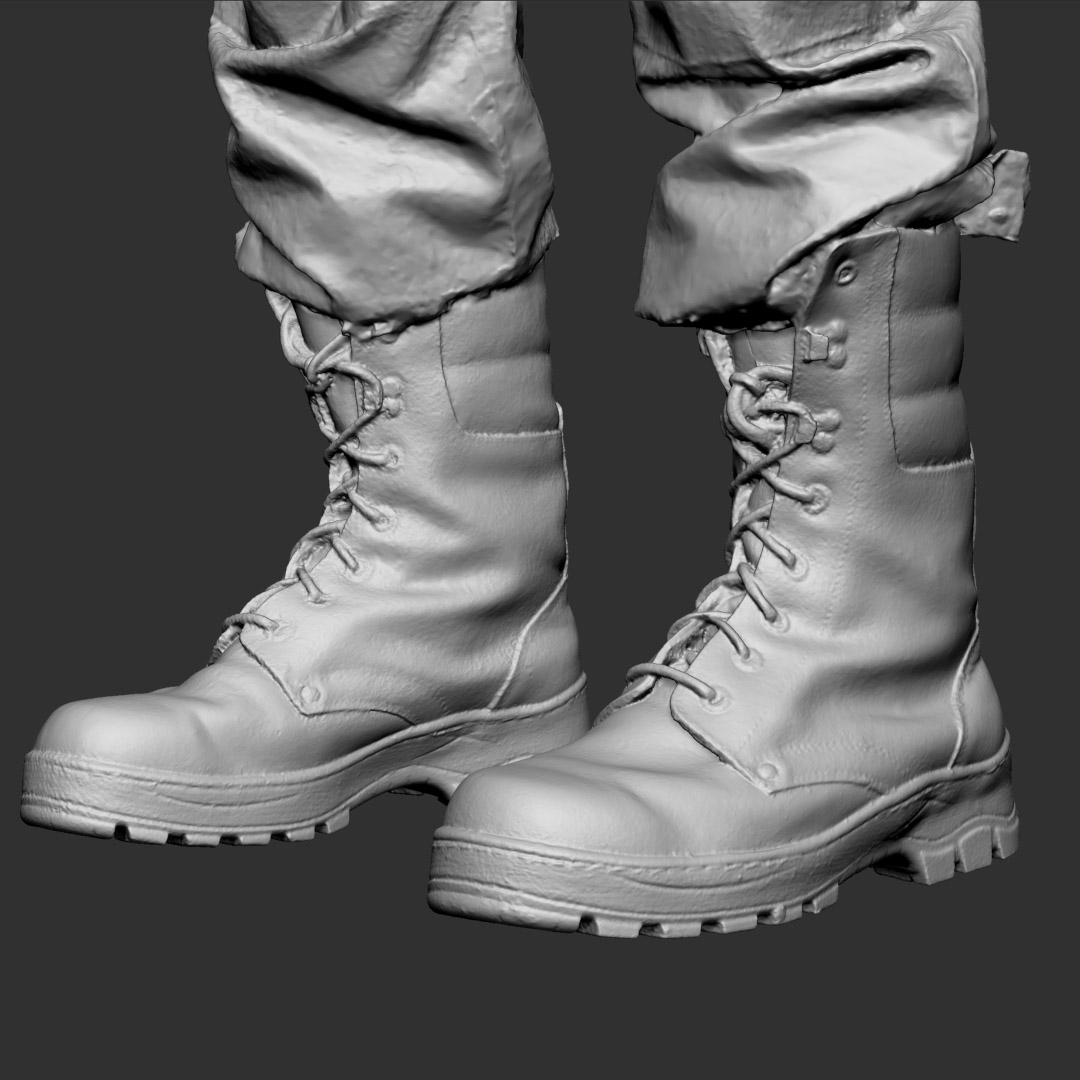
Since photogrammetry is camera-based, the scans also come with very high resolution textures, which can be used to create additional fine detail. Since we know their exact position in space, the texture projection is pixel-perfect – there’s no need for potentially inaccurate projection by an artist.
RELIABILITY
Of course, not all photogrammetry systems are equal – one of the major challenges for an operator of photogrammetry rigs is how complex they can be. With more than a hundred cameras necessary for high-quality human capture, it requires it requires professional electrical and mechanical engineering to build reliable, mobile rigs that can be set up in the tight timeframes necessary in the world of film.
Fortunately, we have solved all these problems. Through our parent company Corbel Geometries Inc., we have custom-built our own hardware and software to synchronize the cameras, offload the photos, and safely store the huge volumes of data created.
FURTHER READING
Want to see more? Check out our cross-polarized head rig and our cross-polarized prop scans!